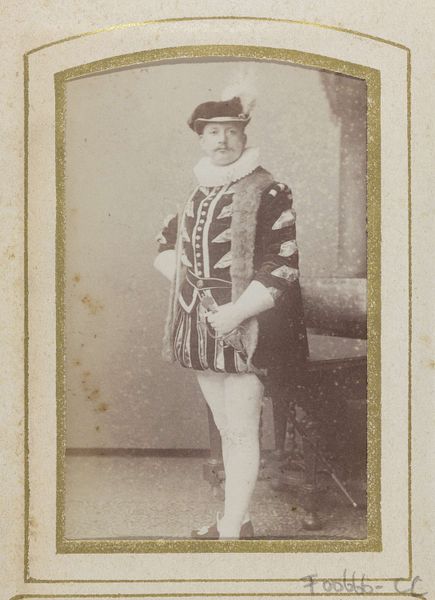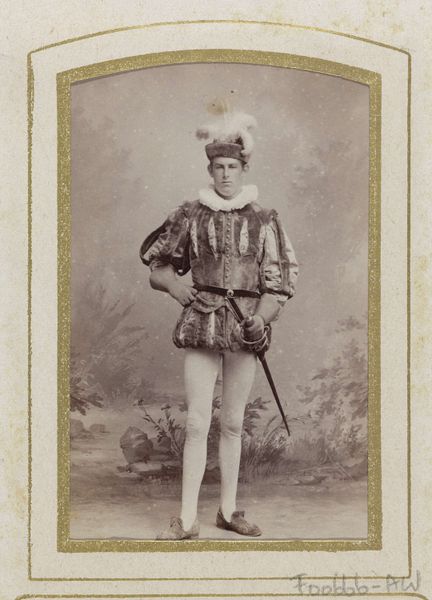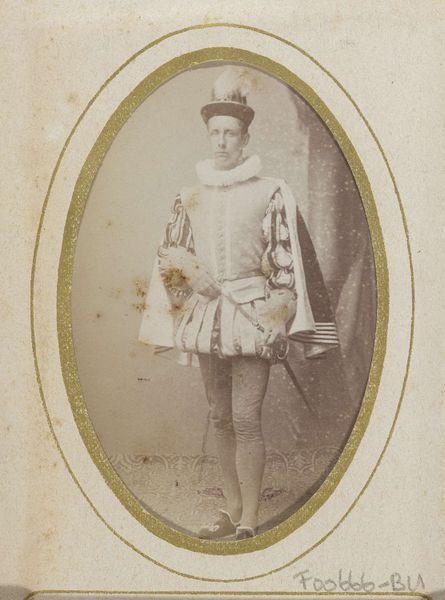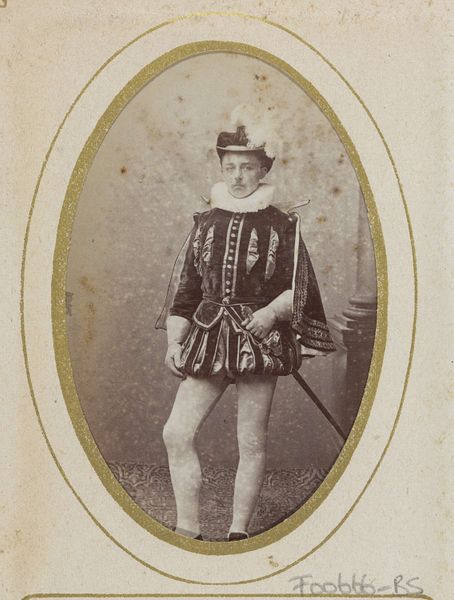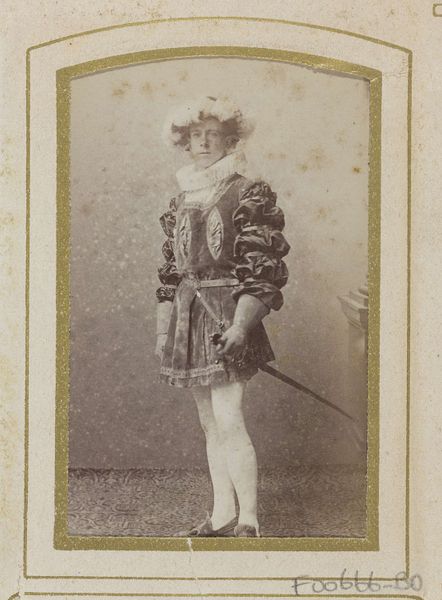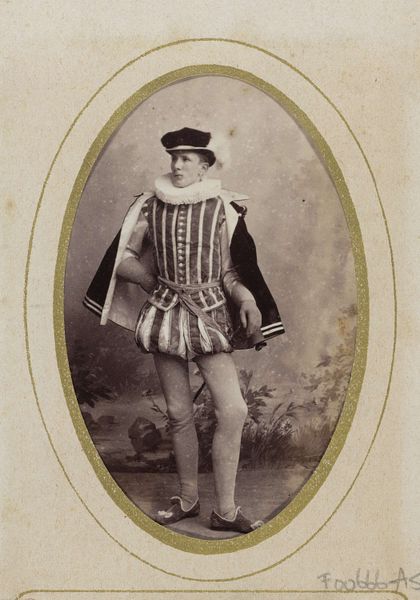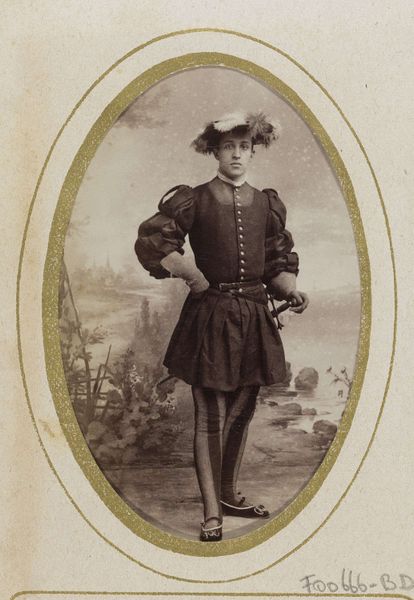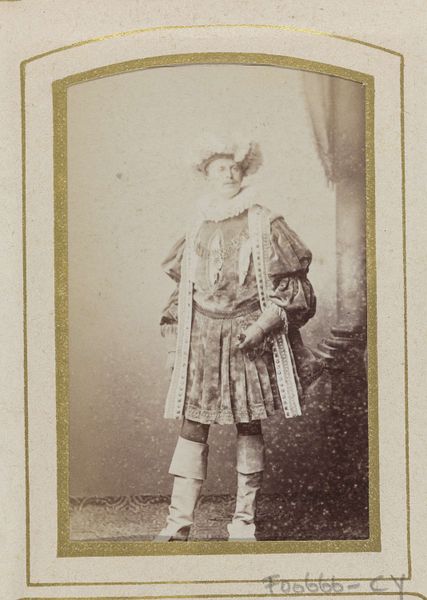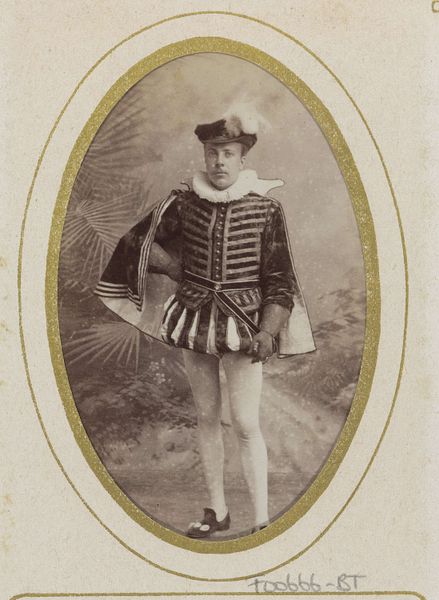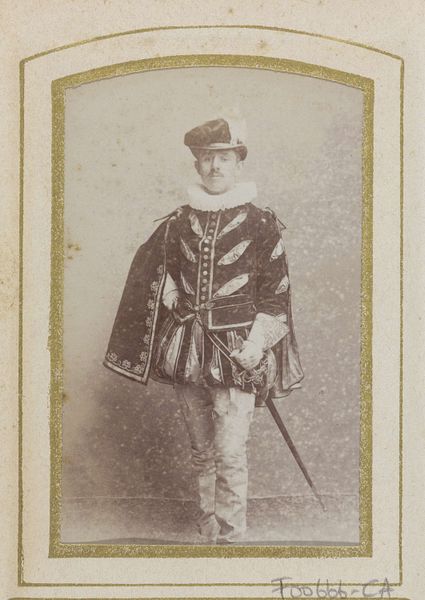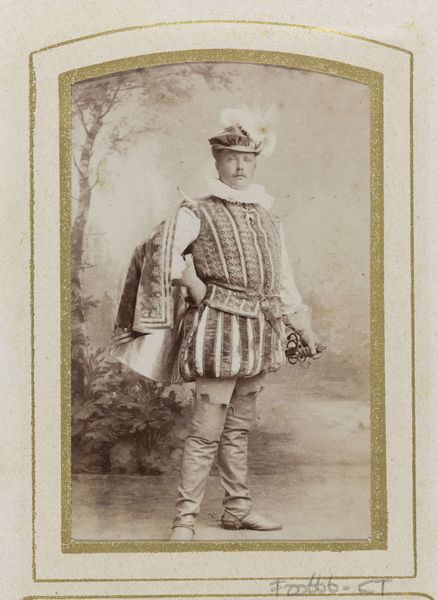
Portret van een jonge man in kostuum, aangeduid als J. Schoemaker Possibly 1887 - 1899
0:00
0:00
daguerreotype, photography
#
portrait
#
pictorialism
#
daguerreotype
#
photography
#
historical photography
#
19th century
#
genre-painting
Dimensions: height 83 mm, width 52 mm
Copyright: Rijks Museum: Open Domain
Editor: Here we have "Portret van een jonge man in kostuum, aangeduid als J. Schoemaker" from possibly between 1887 and 1899, by Antonius Joannes van der Stok, held at the Rijksmuseum. It is a daguerreotype photograph depicting a young man in period costume. What I find striking is the blend of historical aesthetics and the then-modern medium of photography. What stands out to you? Curator: I'm immediately drawn to the materiality of the daguerreotype itself. It's not just a photograph, it's a physical object imbued with its own history of production. The labor involved in creating such an image—the preparation of the plate, the exposure time, the development process—all speak to a very different relationship with image-making than we have today. Editor: That's a fascinating point! So, instead of just seeing the image, you focus on the making of the object? Curator: Precisely. And the choice of costume too. This isn’t simply a portrait; it is referencing genre-painting as the tag indicates, maybe invoking a specific historical narrative through dress and pose. We have to ask about the consumption of such images at the time: who commissioned them? Who were they for? What social role did these costumed portraits play? It also highlights how "high art" constantly borrows and adapts materials and approaches from so called “low art” or craft. Editor: It makes you consider the socio-economic factors at play. It clearly wouldn’t be accessible to everyone. Curator: Absolutely. And this consideration allows us to see photography less as a purely representational tool and more as a material practice deeply embedded within specific economic and social contexts. It challenges us to rethink conventional ideas around artistic creation. What do you make of it now? Editor: I see it very differently now, less as a simple portrait and more as a complex intersection of materials, labor, and social meaning. Curator: Exactly, that's the power of the materialist lens.
Comments
No comments
Be the first to comment and join the conversation on the ultimate creative platform.
